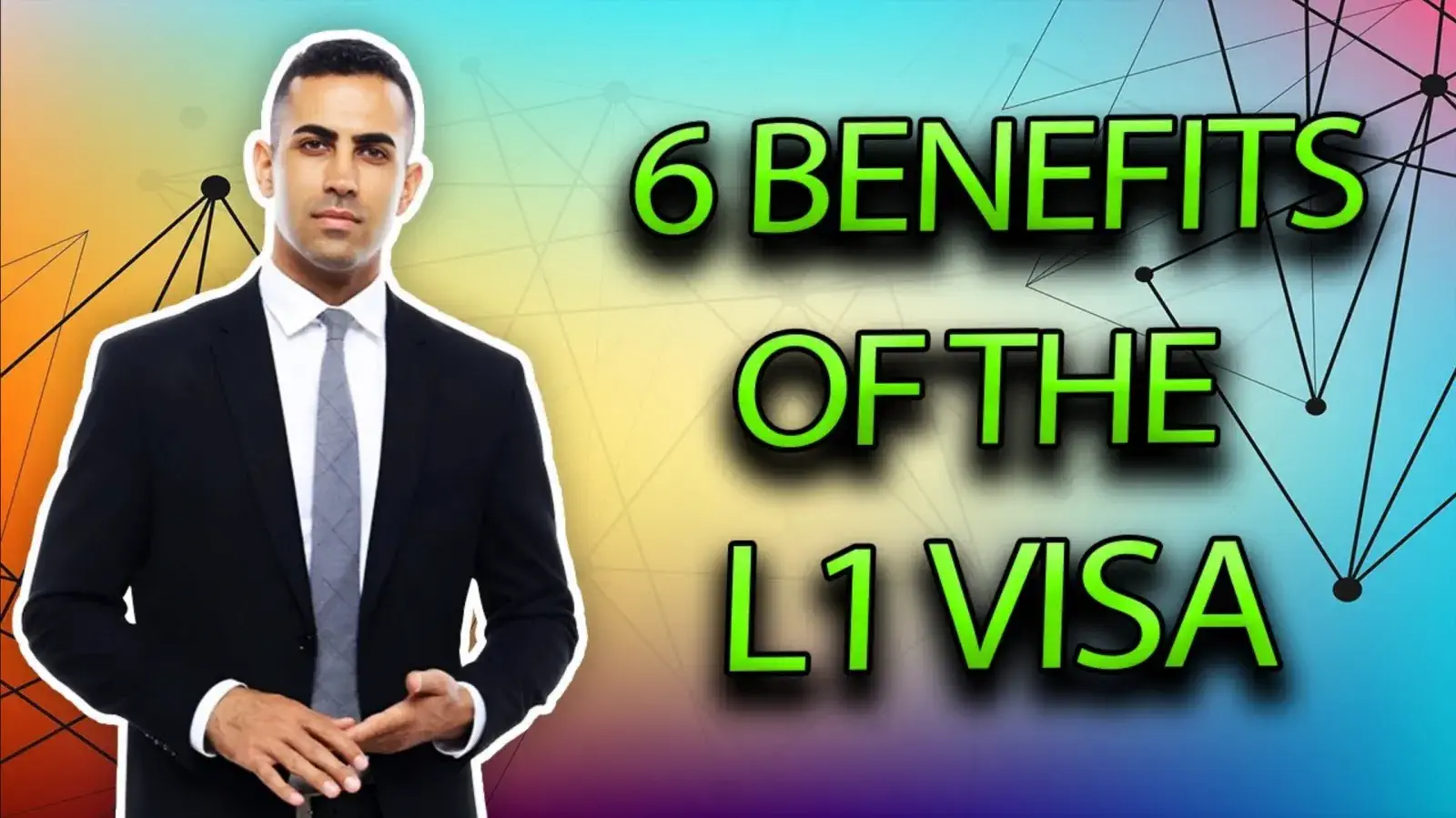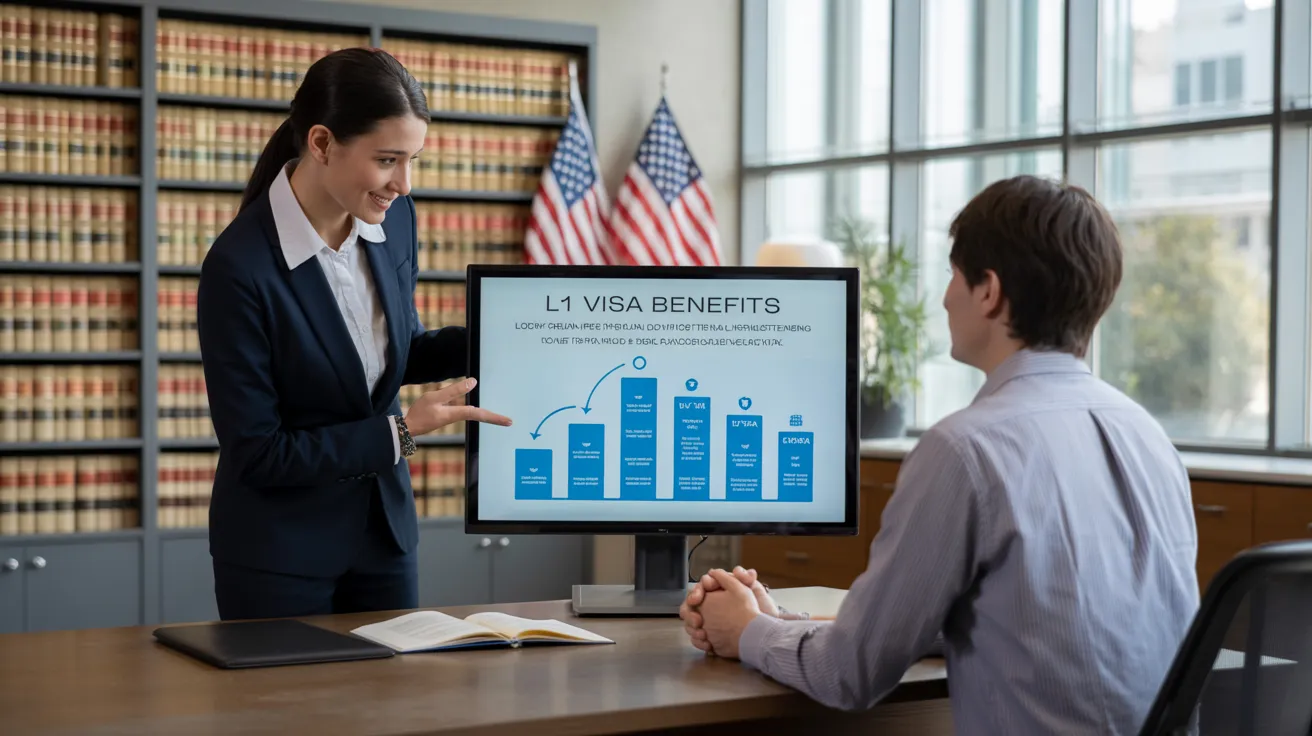Every little thing You Required to Learn About the L1 Visa: Benefits, Needs, and A lot more
The L1 Visa offers as an essential tool for international firms seeking to move employees to the USA, facilitating both functional performance and the transfer of specialized knowledge. With distinct categories for execs and specialized specialists, this visa presents countless advantages, consisting of prospective paths to permanent residency. However, understanding the qualification demands and application process is necessary for a successful change. As we check out the intricacies of the L1 Visa, it ends up being clear that steering its complexities is critical for companies intending to utilize global skill effectively. What obstacles might you come across along the way?
Overview of the L1 Visa

Kinds Of L1 Visas

Numerous types of L1 visas satisfy the varied requirements of multinational firms aiming to transfer staff members to the USA. The two main groups of L1 visas are L1A and L1B, each designed for certain roles and duties within an organization. L1 Visa Requirements.The L1A visa is intended for managers and executives. This category permits companies to transfer people that hold supervisory or executive placements, allowing them to look after operations in the united state. This visa stands for an initial duration of up to three years, with the opportunity of extensions for a total of approximately seven years. The L1A visa is especially helpful for business seeking to develop a solid management presence in the U.S. market.On the other hand, the L1B visa is assigned for workers with specialized expertise. This includes individuals who have advanced experience in certain locations, such as proprietary technologies or one-of-a-kind procedures within the business. The L1B visa is also legitimate for a preliminary three-year period, with expansions readily available for as much as 5 years. This visa classification is excellent for firms that call for staff members with specialized abilities to improve their operations and maintain an one-upmanship in the U.S.Both L1A and L1B visas permit dual intent, implying that visa holders can request permanent residency while on the visa. Comprehending the differences in between these 2 classifications is necessary for companies planning to browse the intricacies of worker transfers to the United States properly
Qualification Demands
To get approved for an L1 visa, both the employer and the worker have to satisfy specific qualification requirements set by united state migration authorities. The L1 visa is made for intra-company transferees, enabling multinational business to transfer employees to their united state offices.First, the company needs to be a certifying organization, which suggests it should have a moms and dad business, branch, subsidiary, or associate that is operating both in the U.S. and in the foreign nation. This relationship is necessary for demonstrating that the employee is being transferred within the very same company framework. The company needs to likewise have been doing business for a minimum of one year in both locations.Second, the employee must have been utilized by the foreign company for at the very least one constant year within the 3 years coming before the application. This employment has to remain in a supervisory, exec, or specialized knowledge capability. For L1A visas, which deal with managers and executives, the employee needs to demonstrate that they will certainly remain to operate in a comparable capacity in the united state For L1B visas, planned for employees with specialized knowledge, the private must have one-of-a-kind proficiency that contributes significantly to the business's operations.
Application Process
Maneuvering the application process for an L1 visa involves a number of essential actions that should be completed properly to ensure an effective result. The primary step is to identify the ideal classification of the L1 visa: L1A for managers and executives, or L1B for workers with specialized expertise. This distinction is substantial, as it impacts the documents required.Once the classification is recognized, the U.S. employer must submit Kind I-129, Request for a Nonimmigrant Employee. This form must consist of detailed details concerning the business, the worker's role, and the nature of the job to be carried out in the united state Accompanying paperwork normally includes proof of the connection in between the U.S. and international entities, proof of the worker's certifications, and info pertaining to the work offer.After submission, the U.S. Citizenship and Migration Solutions (USCIS) will assess the request. If accepted, the employee will be notified, and they can after that get the visa at a united state consulate or embassy in their home country. This entails completing Type DS-160, the Online Nonimmigrant copyright, and arranging an interview.During the interview, the candidate has to offer numerous records, consisting of the authorized Kind I-129, proof of work, and any additional sustaining proof. Adhering to the interview, if the visa is granted, the employee will obtain a visa stamp in their ticket, allowing them to enter the united state to function for the sponsoring company. Correct prep work and comprehensive documents are vital to maneuvering this process successfully.
Benefits of the L1 Visa
One of the notable benefits of the L1 visa is its capacity to assist in the transfer of essential workers from international offices to the United States. This visa is particularly beneficial for multinational firms seeking to keep uniformity in operations and leadership throughout boundaries. By permitting execs, managers, and specialized employees to function in the U.S., organizations can ensure that their most crucial talent is offered to drive company objectives.Another significant advantage of the L1 visa is its reasonably uncomplicated application process contrasted to various other work visas. Organizations can petition for the L1 visa without the demand for a labor qualification, which simplifies the recruitment of international staff members. The visa can be approved for a first period of up to 3 years, with the opportunity of extensions, assisting in long-term assignments.The L1 visa additionally offers a course to irreversible residency. Staff members on L1A visas (for supervisors and execs) can obtain a Permit after one year, quickening their change to permanent condition. This attribute is an attractive incentive for gifted people looking for stability in the U.S. workforce.Additionally, L1 visa owners can bring their immediate member of the family to the U.S. under L2 status, enabling spouses and youngsters to stay and study in the country, enhancing the general charm of this visa group. In general, the L1 visa functions as a necessary tool for global services, cultivating cross-border cooperation and talent mobility.
Usual Challenges
While the L1 visa offers various benefits for multinational companies and their employees, it is not without its obstacles. One noteworthy obstacle is the stringent paperwork and eligibility demands imposed by the U.S. Citizenship and Migration Services (USCIS) Firms must supply detailed proof of the international worker's credentials, the nature of business, and the certifying relationship between the U.S. and foreign entities. This process can be taxing and may call for legal know-how to browse successfully.Another difficulty is the capacity for examination during the application process. USCIS officers might question the authenticity of the company operations or the worker's function within the company. This examination can cause delays and even denials of the copyright, which can greatly impact the firm's operational strategies and the employee's occupation trajectory.Furthermore, the L1 visa is linked to the funding company, which means that work changes can complicate the visa condition. If an L1 visa owner wants to change employers, they have to commonly seek a various visa group, which can add intricacy to their immigration journey.Lastly, maintaining conformity with L1 visa regulations is vital. Employers need to ensure that their employee's function lines up with the preliminary application which the business continues to fulfill the qualification needs. Failing to do so can cause revocation of the visa, affecting both the worker and the organization. These obstacles require extensive preparation and continuous management to ensure a successful L1 visa experience.
Tips for Success
To efficiently browse the L1 visa process, careful preparation is essential. Start by thoroughly comprehending the certain needs for the L1 visa classification you are getting, whether L1A for managers and execs or L1B for workers with specialized expertise. Collect all required documents early while doing so, consisting of evidence of your employment background, organizational structure, and the nature of the organization operations.Engage lawful advise experienced in immigration regulation to assist you via the complexities of the application. An attorney can aid ensure that your application is total, accurate, and compelling. They can also aid in getting ready for prospective ask for proof (RFEs) by proactively attending to locations that may raise questions.Additionally, preserve clear communication with your employer, that need to offer vital assistance for your application. L1 Visa Lawyer. Confirm that they understand their obligations, including filing the required applications and giving documentation that corroborates your role in the organization.Prepare for the visa interview by exercising solution to common questions regarding your specialist background and the nature of your work. Demonstrating self-confidence and quality can click here greatly affect the end result of your application
Regularly Asked Questions
Can Family Members Accompany L1 Visa Owners?
Yes, relative can go along with L1 visa holders. Spouses and single youngsters under 21 years old are qualified for L2 visas, which allow them to live and study in the USA during the L1 owner's remain.
Just How Lengthy Can L1 Visa Owners Stay in the united state?
L1 visa holders can initially remain in the united state for as much as 3 years (L1 Visa Requirements). This duration might be prolonged, allowing a maximum remain of 7 years for L1A visa owners and 5 years for L1B visa holders
Is the L1 Visa a Dual Intent Visa?

Can L1 Visa Owners Obtain a Permit?
Yes, L1 visa holders can apply for a permit - What Is L1 Visa. The L1 visa sustains double intent, allowing holders to seek irreversible residency while preserving their non-immigrant status, assisting in a smoother transition to a permit
What Occurs if an L1 copyright Is Rejected?
If an L1 copyright is denied, the candidate may get a notification laying out the reasons for rejection. L1 Visa. They can appeal the choice, reapply, or explore different visa alternatives relying on their situations and credentials
Conclusion
In summary, the L1 Visa works as an essential instrument for international companies seeking to transfer workers to the USA. Comprehending the distinctions between L1A and L1B classifications, in addition to the eligibility requirements and application procedures, is crucial for successful navigating of this non-immigrant classification. The benefits offered, consisting of streamlined applications and paths to long-term residency, better improve its allure. Addressing common obstacles properly can bring about a much more positive end result in the copyright procedure.